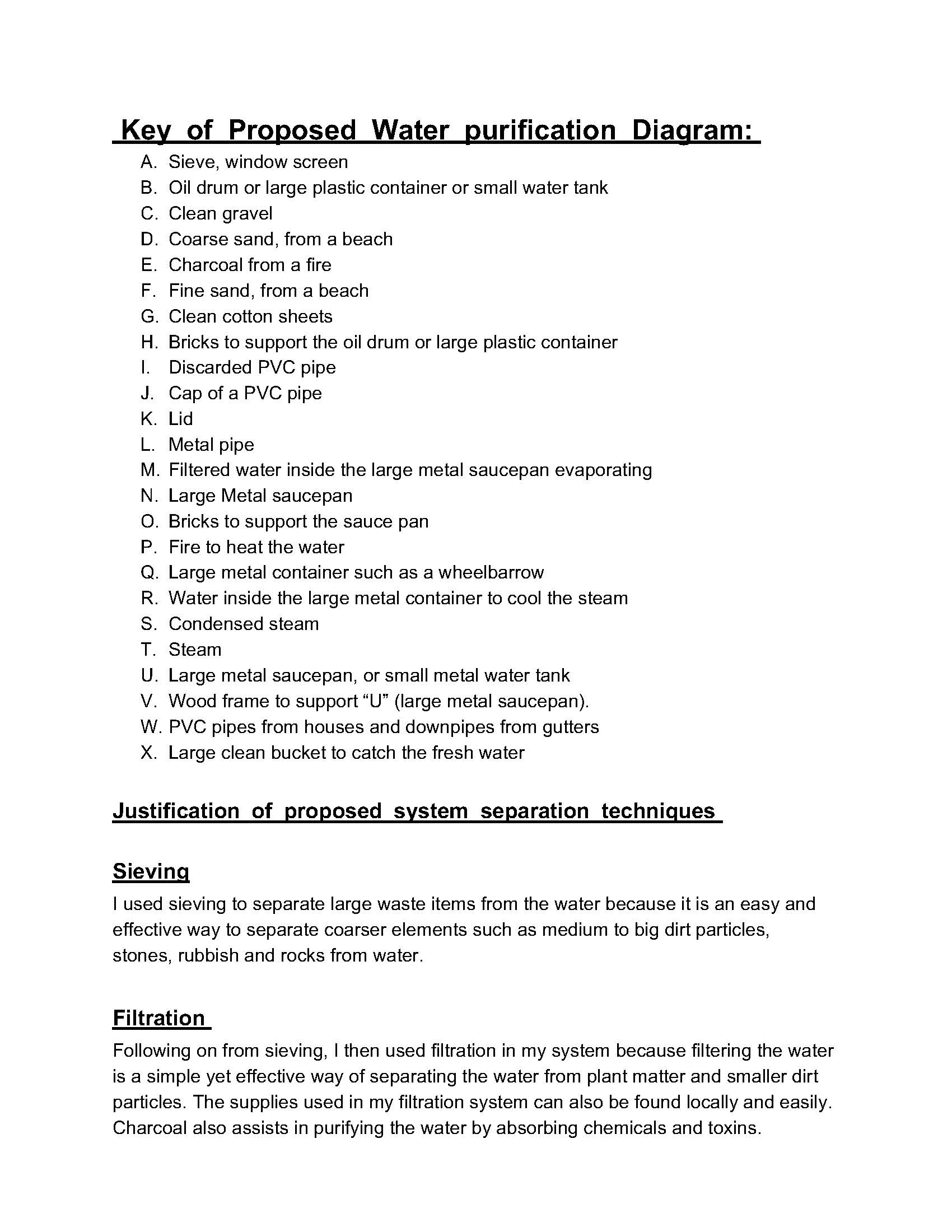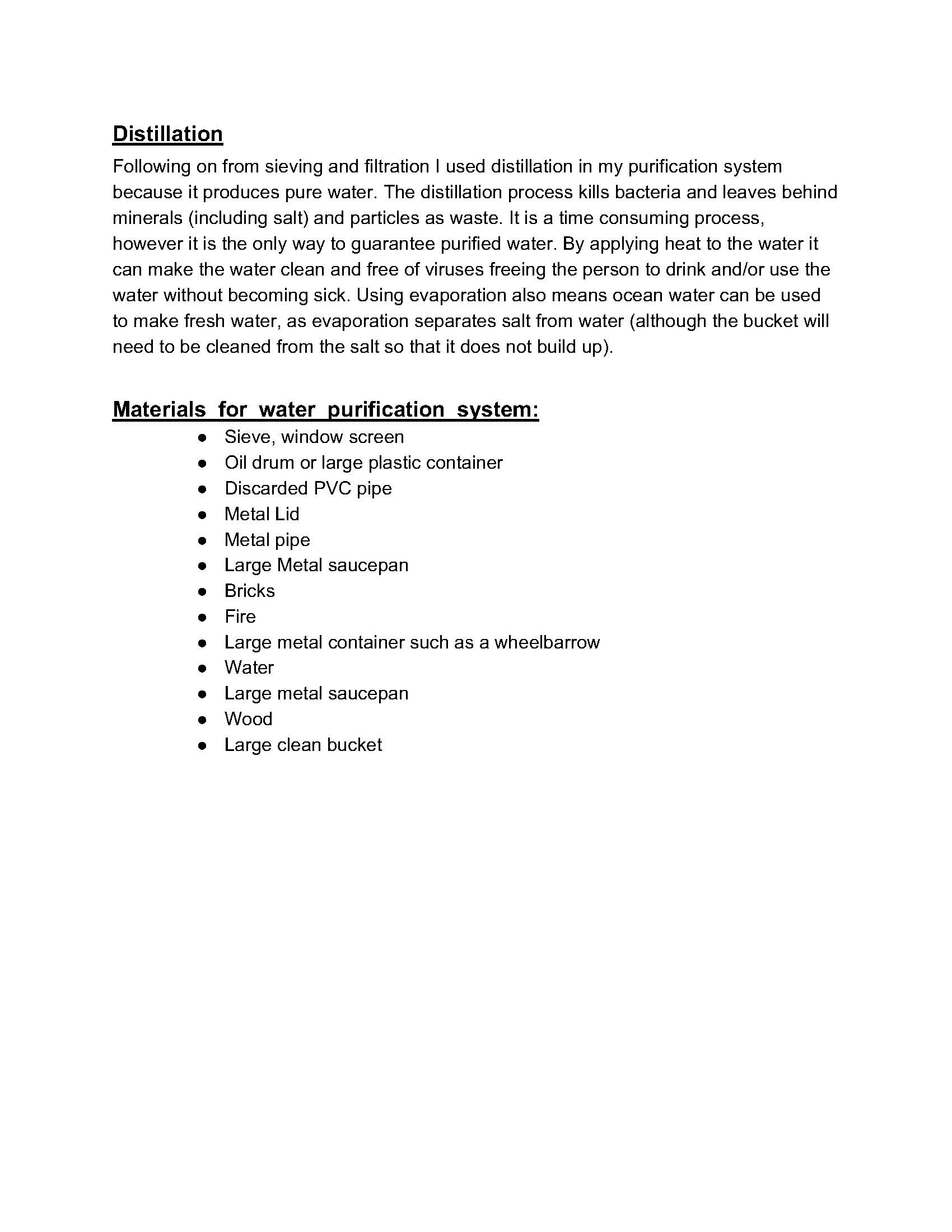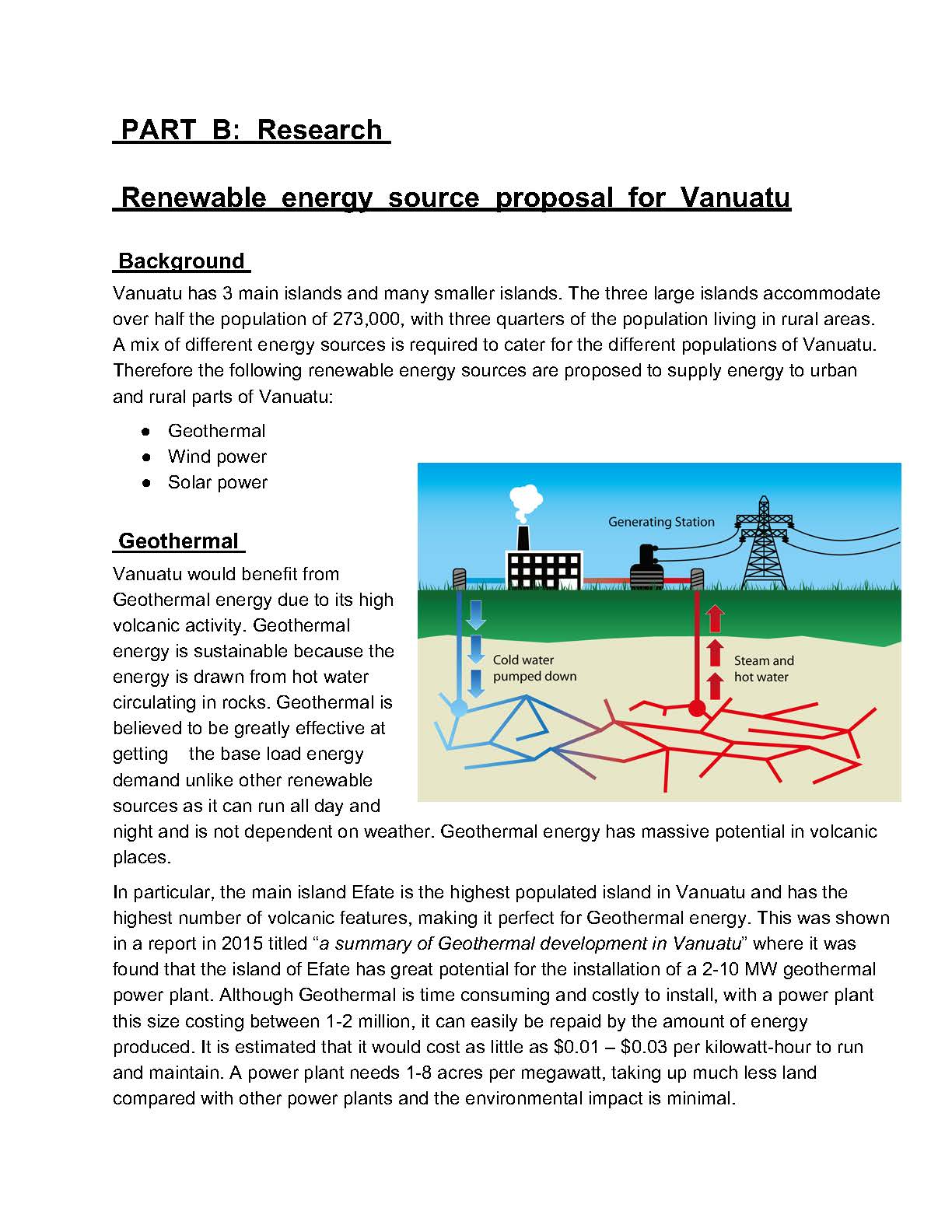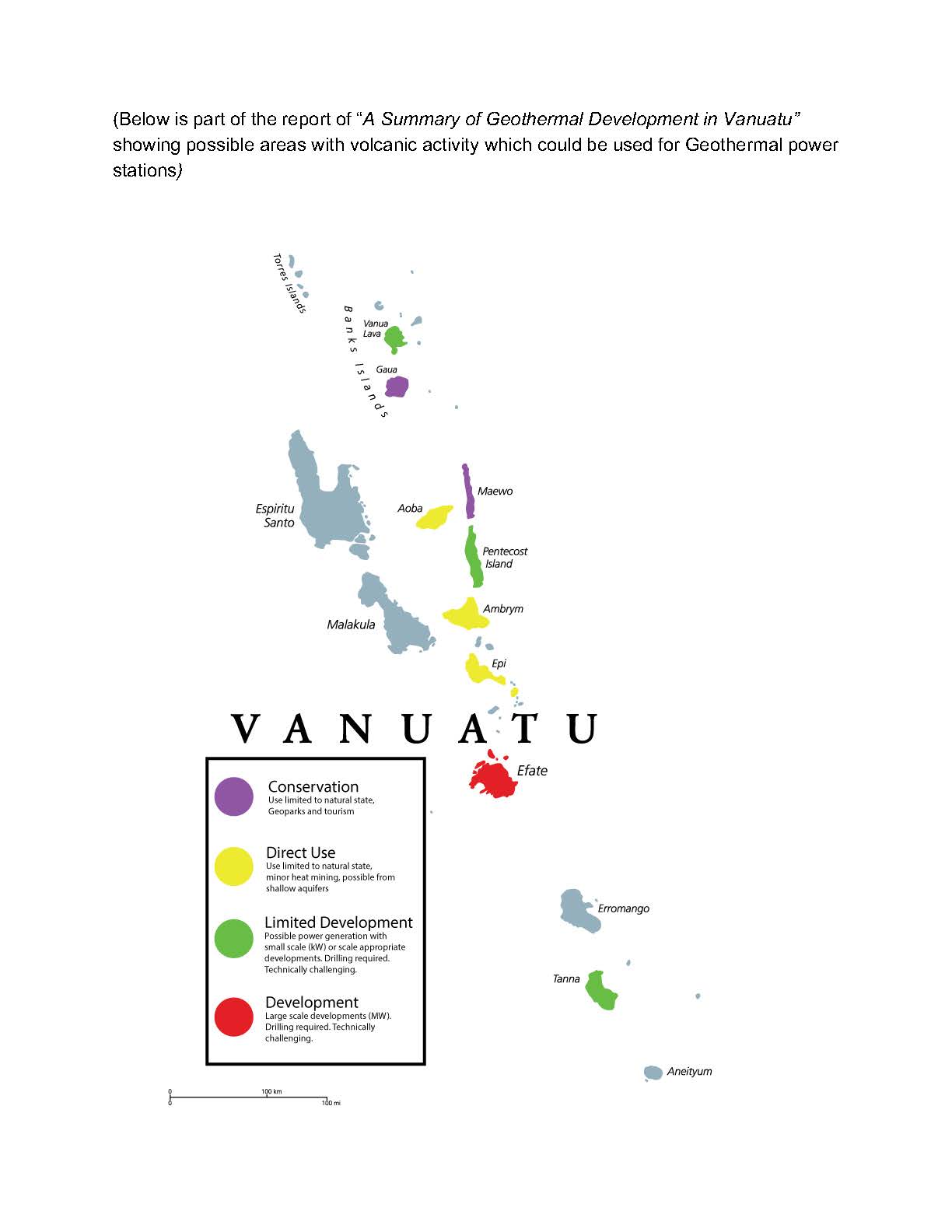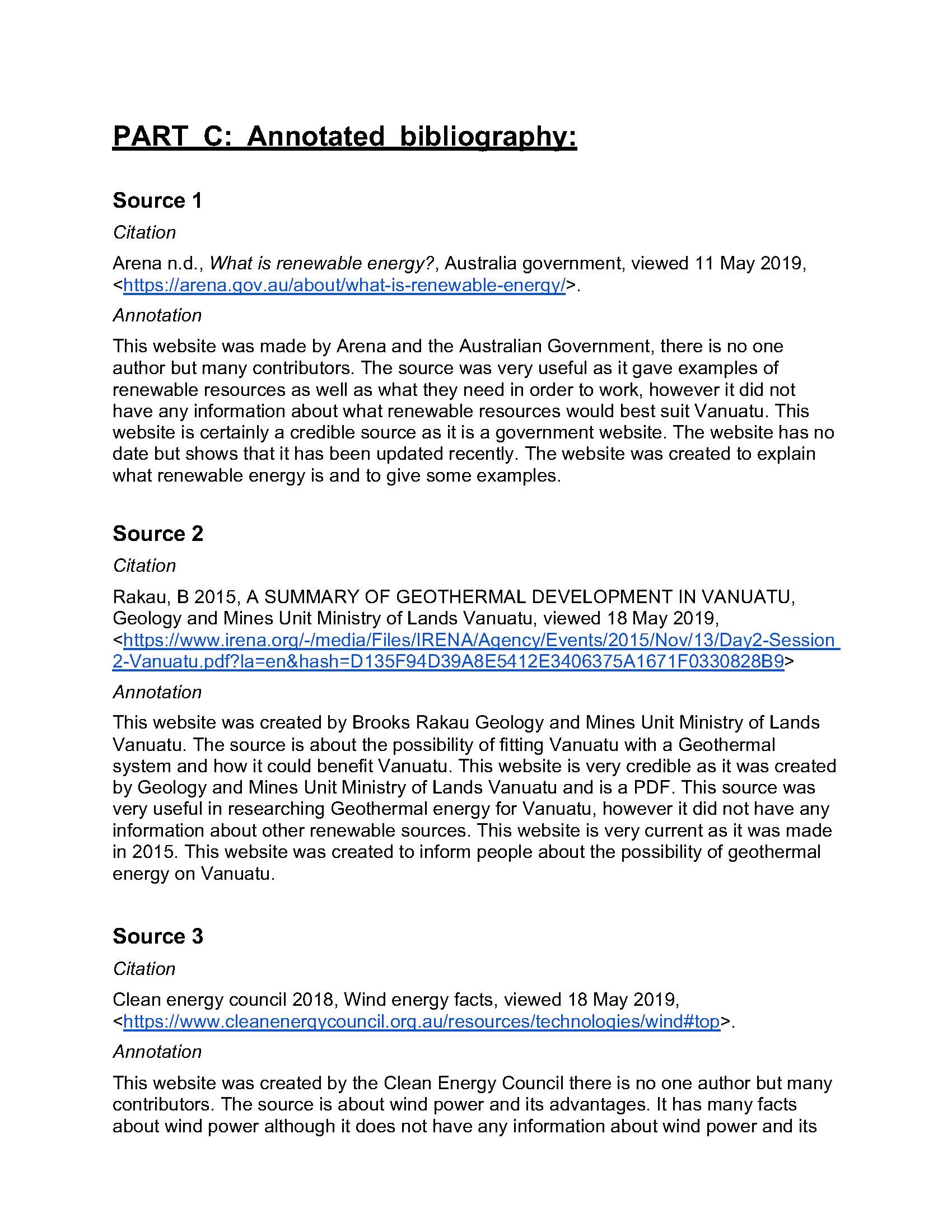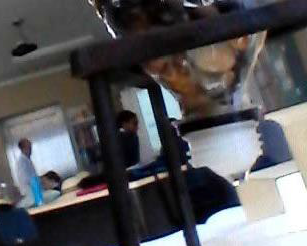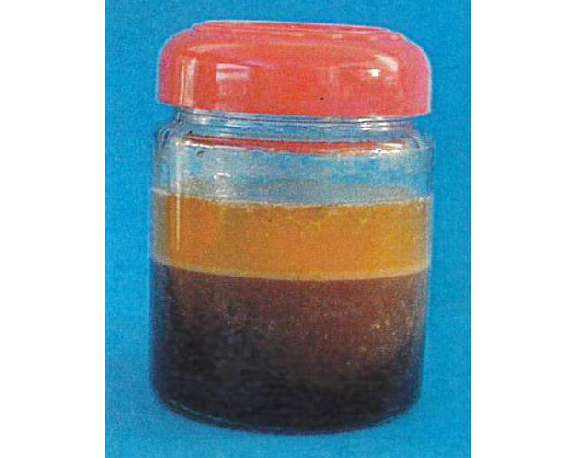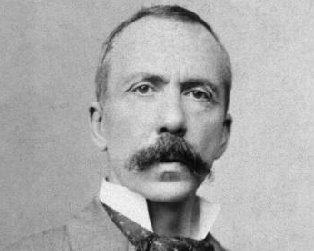Cyclone recovery measures
Summary of task
During a teaching and learning unit on chemical sciences, students learnt about pure substances and mixtures and investigated a variety of separation techniques for soluble and insoluble substances. During a unit on Earth and space sciences, students learnt about renewable and non-renewable energy sources and other resources. Students received instruction about how to create an annotated bibliography.
This task was designed to give students opportunities to apply what they had learnt in a real-world scenario. The context for this scenario was a tropical cyclone had affected the water and energy supply of Vanuatu. Students were asked to research and recommend measures that would aid the Pacific nation’s recovery from the effects of the cyclone. The task consisted of three parts. In part A, students were asked to design a water purification device using only resources found locally after the cyclone. They were required to utilise three separation techniques in their device and explain and justify each technique’s inclusion. Part B required students to research suitable renewable energy sources for Vanuatu. Students were then asked to make recommendations about the best renewable energy alternatives either in the style of a technical report or in form of a letter to the Vanuatuan government. In part C, students were asked to create an annotated bibliography, providing annotations for at least four of the sources they had used during their research.

